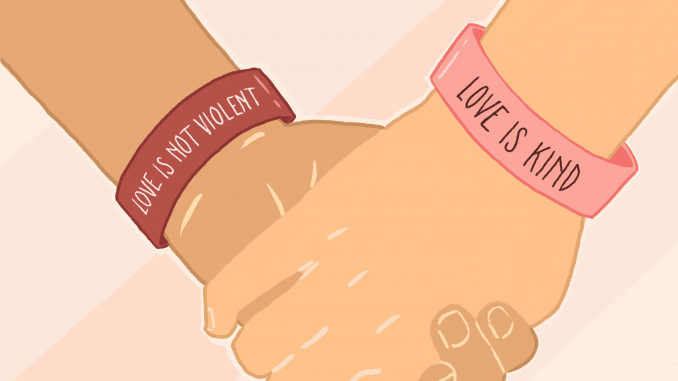
Content warning: This article discusses topics around sexual assault that may be triggering for some readers.

When I first read the statistic from the Temple University’s Wellness Resource Center that 21 percent of college students experience interpersonal violence while in school, I was terrified.
My mind immediately thought of my four closest friends and myself — how between us five, one of us is statistically likely to be affected by dating violence. That thought horrifies me, especially when knowing how relationship violence disproportionately affects young adults and college students.
Dating violence, which refers to a pattern of abusive behavior against an intimate partner, affects adolescent women ages 16-24 at three times the rate of the national average, according to LoveIsRespect, a division of the National Domestic Violence Hotline focused on young people.
In 2018, reported cases of dating violence, domestic violence and stalking at Temple doubled from 12 in 2017 to 24, according to the university’s 2019 annual security and annual fire safety report. Increased awareness of what qualifies as dating violence could be a factor in the increase in students reporting cases of dating violence, said Andrea Seiss, Temple’s Title IX coordinator.
While this Friday is Valentine’s Day, this month is also Teen Dating Violence Awareness Month. Although it’s important to celebrate the healthy relationships that we have, not all relationships are healthy, and not everyone has the tools to help friends and family that may be experiencing this.
As students, we need to use this time to better understand dating violence and how to recognize signs of abusive behavior early on, not only in our own relationships but in others’ too.
Unhealthy relationship behaviors aren’t necessarily an abusive relationship unless they’re rooted in power and control, said Liz Zadnik, the assistant director of the WRC whose programming focuses on prevention of sexual violence, interpersonal violence and stalking on campus.
These unhealthy behaviors include monitoring a partner’s location, text messages and who they associate with, as well as preventing them from having their own money, doing certain activities and seeing friends and family, according to Planned Parenthood.
Signs of an abusive relationship include physical, sexual, verbal and emotional abuse, as well as reproductive control, threats, intimidation and isolation, according to Planned Parenthood.
“When folks are cut off from their support networks, whatever that may be, they can feel disconnected,” Zadnik said. “They don’t have folks that they can reach out to to get a perspective or support or affirmation.”
That’s why it’s so critical to be able to identify signs of an unhealthy or abusive relationship early on. Signs that a friend is experiencing an abusive relationship include significant changes in dress, poor mood, abrupt cancellations of plans and violent or aggressive behavior by their significant other, according to Safe Horizon, a crime and abuse prevention organization.
“Supporting them in finding joy, celebrating the connections that they have, investing the time in activities that bring them joy and never necessarily saying, ‘You should do something,’ but ‘I’m here to support you no matter what,” Zadnik added.
Although physical violence is one indication of an abusive relationship, emotional and economic abuse, threatening statements and the use of sexual coercion are all signs of an abusive relationship, according to the National Domestic Violence Hotline.
It’s also essential to recognize whether we’re personally contributing to an unhealthy or abusive relationship.
Unhealthy relationship behaviors can be influenced by the media and childhood figures we see modeling that behavior from a young age, Zadnik said. Exposure to domestic violence by parents can teach children it’s acceptable to use violence to exert control in relationships, repeating those same behaviors as adults, according to the National Childhood Trauma Association.
“It’s not enough to tell a kid what not to do,” said Valencia Peterson, the founder of Open Door Abuse Awareness Prevention, a violence prevention program for local children, adolescents and college students. “We have to tell them why they might even think about doing it, where it came from and what’s the cause of it.”
Zadnik recommends listening to feedback about certain unhealthy behaviors in previous relationships and telling ourselves it’s “not something I want to experience and I don’t want to make my partner feel that way again.”
Teaching ourselves how to prevent dating violence is the first step in making change. It’s terrifying to know that one in five college students are likely to experience dating violence, but we have the opportunity to make progress.
Don’t add to that statistic — erase it completely.



Be the first to comment